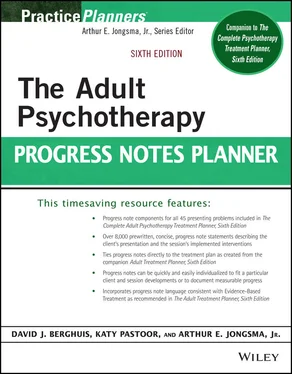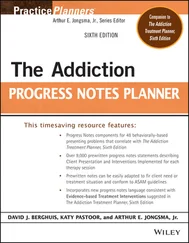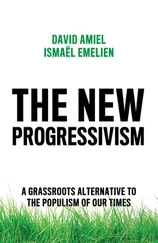4 Flight of Ideas/Racing Thoughts (4)The client demonstrated an inability to stay focused on one subject and moved quickly from one topic to another.The client reported that he/she/they have difficulty concentrating on one thought because other thoughts interfere.The client reported that at times of quiet reflection, he/she/they are disturbed by thoughts racing through his/her/their mind.The client's thoughts are not racing as they had been and he/she/they are able to stay focused on one topic in a conversation.
5 Grandiosity (5)The client gave evidence of grandiose ideas regarding his/her/their abilities, plans, and accomplishments.In spite of attempts to try to get the client to be more realistic, his/her/their grandiosity continued.The client's grandiosity has diminished and he/she/they have become more reality-based.There has been no recent evidence of grandiosity in the client's description of self or plans for the future.
6 Persecutory Beliefs (5)The client described feeling misunderstood and persecuted by others who do not acknowledge his/her/their grandiose ideas.The client described feelings of anger and persecution directed at those who discount his/her/their grandiosity.As the client's grandiosity has diminished, his/her/their feelings of persecution and low frustration threshold with others have also diminished.
7 Lack of Sleep (6)The client described a pattern of attaining far less sleep than would normally be needed.The client has gone through periods of time when he/she/they did not sleep for 24 consecutive hours because his/her/their energy level was so high.As the client's mania has begun to diminish, he/she/they have begun to return to a more normal sleeping pattern.The client is getting 6 to 8 hours of sleep per night.
8 Diminished Appetite (7)The client described a pattern of eating far less than normal amounts of food.The client has gone through periods of time when he/she/they have had very little to eat for an entire day.As the client's mania has begun to diminish, he/she/they have begun to return to a more normal eating pattern.The client is eating at least two meals per day.
9 Motor Agitation (8)The client was restless and agitated within the session and reports an inability to sit quietly and relax.The client's high energy level is reflected in increased motor activity, restlessness, and agitation.The client's motor activity has decreased and the level of agitation has diminished.The client demonstrated normal motor activity and reports being able to stay calm and relaxed.
10 Easily Distracted (9)The client gave evidence of a short attention span and a high level of distractibility.The client reported that he/she/they are unable to focus his/her/their thoughts on one topic.The client's attention shifted quickly from one stimulus to the next.The client has shown increased ability to focus attention and has reduced distractibility.
11 Disinhibition/Impulsivity (10)The client reported a behavior pattern that reflects a lack of normal inhibition and an increase in impulsivity without regard to potentially painful consequences.The client's impulsivity has been reflected in sexual acting out, poor financial decisions, and committing of social offenses.The client has gained more control over his/her/their impulses and has returned to a normal level of inhibition and social propriety.
12 Bizarre Dress/Grooming (11)The client's grooming and style of dress were outlandish.The client showed little comprehension of the impact of his/her/their outlandish and bizarre dress and grooming practices.The client has shown better judgment in dress and has become more conventional in grooming habits.
13 Expansive Moods/Irritability (12)The client gave evidence of a very expansive mood that can easily turn to impatience and irritability if his/her/their behavior is blocked or confronted.The client related instances of feeling angry when others tried to control his/her/their expansive, grandiose ideas and mood.As the client's expansive mood has been controlled, his/her/their impatience and irritable anger have diminished.
14 Lack of Follow-Through (13)The client described a behavior pattern that reflects a lack of follow-through on many projects, even though his/her/their energy level is high, due to distractibility and impairment in discipline and goal directedness.The client's lack of follow-through on projects has resulted in frustration on the part of others.The client has begun to exercise more discipline and goal directedness in his/her/their behavior, resulting in the completion of projects.
INTERVENTIONS IMPLEMENTED
1 Establish Rapport (1) 2 Caring was conveyed to the client through support, warmth, and empathy.The client was provided with nonjudgmental support and a level of trust was developed.The client was urged to feel safe in expressing his/her bipolar mania symptoms.The client began to express feelings more freely as rapport and trust level have increased.The client has continued to experience difficulty being open and direct about his/her expression of painful feelings; he/she was encouraged to use the safe haven of therapy to express these difficult issues.
2 Focus on Strengthening Therapeutic Relationship (2)The relationship with the client was strengthened using empirically supported factors.The relationship with client was strengthened through the implementation of a collaborative approach, agreement on goals, demonstration of empathy, verbalization of positive regard, and collection of client feedback.The client reacted positively to the relationship-strengthening measures taken.The client verbalized feeling supported and understood during therapy sessions.Despite attempts to strengthen the therapeutic relationship, the client reports feeling distant and misunderstood.The client has indicated that sessions are not helpful and will be terminating therapy.
3 Assess Mania Intensity (3)The client was assessed for whether he/she/they were or have been hypomanic, manic, or manic with psychotic features.The client was assessed with the Young Mania Rating Scale (Young et al.).The client was assessed with the Clinical Monitoring Form (Sachs et al.).The client was assessed to be hypomanic.The client was assessed to be manic.The client's mania was noted to be so severe as to evolve into periods of psychosis.
4 Assess Family Communication Patterns (4)Objective instruments were used to assess the family communication patterns.The level of expressed emotions within the family was specifically assessed.The Perceived Criticism Scale (Hooley and Teasdale) was used to assess family communication problems.The family was provided with feedback about their pattern of communication.The family has not been involved in the assessment of communication patterns, and the focus of treatment was diverted to this resistance.
5 Refer for Physician Assessment Regarding Etiology (5)The client was referred to a physician to rule out nonpsychiatric medical etiologies (e.g. thyroid dysregulation, sedative use) for his/her/their bipolar disorder.The client was referred to a physician to rule out substance-induced etiologies for his/her/their bipolar disorder.The client has complied with the referral to a physician and the results of this evaluation were reviewed.The client has not complied with the referral for a medical evaluation and was redirected to do so.
6 Arrange Substance Abuse Evaluation (6)The client's use of alcohol and other mood-altering substances was assessed.The client was assessed to have a pattern of mild substance use.The client was assessed to have a pattern of moderate substance use.The client was assessed to have a pattern of severe substance use.The client was referred for a substance use treatment.The client was found to not have any substance use concerns.
7 Assess Level of Insight (7)The client's level of insight toward the presenting problems was assessed.The client was assessed in regard to the syntonic versus dystonic nature of his/her/their insight about the presenting problems.The client was noted to demonstrate good insight into the problematic nature of the behavior and symptoms.The client was noted to be in agreement with others' concerns and is motivated to work on change.The client was noted to be ambivalent regarding the problems described and is reluctant to address the issues as a concern.The client was noted to be resistant regarding acknowledgment of the problem areas, is not concerned about them, and has no motivation to make changes.
Читать дальше












